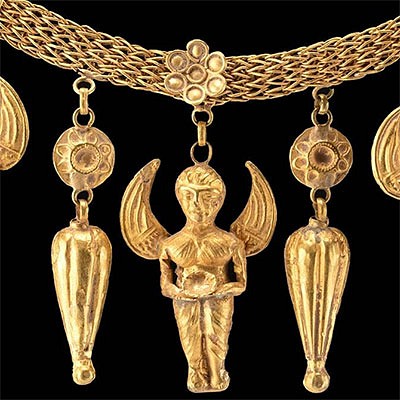19th C. Dayak Kenyah Hampatong Charm Figure
Lot 79a
About Seller
Artemis Gallery
686 S Taylor Ave, Ste 106
Louisville, CO 80027
United States
Selling antiquities, ancient and ethnographic art online since 1993, Artemis Gallery specializes in Classical Antiquities (Egyptian, Greek, Roman, Near Eastern), Asian, Pre-Columbian, African / Tribal / Oceanographic art. Our extensive inventory includes pottery, stone, metal, wood, glass and textil...Read more
Categories
Estimate:
$500 - $750
Absentee vs Live bid
Two ways to bid:
- Leave a max absentee bid and the platform will bid on your behalf up to your maximum bid during the live auction.
- Bid live during the auction and your bids will be submitted real-time to the auctioneer.
Bid Increments
| Price | Bid Increment |
|---|---|
| $0 | $25 |
| $300 | $50 |
| $1,000 | $100 |
| $2,000 | $250 |
| $5,000 | $500 |
| $10,000 | $1,000 |
| $20,000 | $2,500 |
| $50,000 | $5,000 |
| $100,000 | $10,000 |
| $200,000 | $20,000 |
About Auction
By Artemis Gallery
Dec 3, 2020
Set Reminder
2020-12-03 10:00:00
2020-12-03 10:00:00
America/New_York
Bidsquare
Bidsquare : Fine Antiquities, Ethnographic & Fine Art
https://www.bidsquare.com/auctions/artemis-gallery/fine-antiquities-ethnographic-fine-art-6119
Features classical antiquities, ancient and ethnographic art from cultures encompassing the globe. Egyptian, Greek, Roman, Etruscan, Near Eastern, Asian, Pre-Columbian, Native American, African / Tribal, Oceanic, Spanish Colonial, Russian, Fine Art, so much more! All legally acquired, legal to sell. Artemis Gallery info@artemisgallery.com
Features classical antiquities, ancient and ethnographic art from cultures encompassing the globe. Egyptian, Greek, Roman, Etruscan, Near Eastern, Asian, Pre-Columbian, Native American, African / Tribal, Oceanic, Spanish Colonial, Russian, Fine Art, so much more! All legally acquired, legal to sell. Artemis Gallery info@artemisgallery.com
- Lot Description
Southeast Asia, Borneo, Dayak, Kenyah people, ca. late 19th century CE. An engaging hampatong wooden ancestor figure on an integral plinth carved by an accomplished craftsman of the Dayak in Borneo. Featuring an ovoid visage and tall forehead, the figure stares forward through coffee-bean shaped eyes over a flat nose and straight mouth with a protruding tongue. As is typical of many hampatong figures, the stylized character slightly crouches with both arms resting just below its clearly delineated pectorals, as the long twisted fingers grasp their abdomen and groin, possibly to express illness. The outline of a petite minimalistic figure with legs spread and arms raised is depicted on the sculpture's back, perhaps intended as an infant or a symbolic child representing descendants, as this is an ancestral figure. An impressive example boasting fine technique, a wonderful abstract form, and numerous layers of meaning. Size: 1.875" W x 9" H (4.8 cm x 22.9 cm); 9.75" H (24.8 cm) on included custom stand.
The word Hampatong comes from the Dayak word patong which means statue. Most Hampatong figures portray ancestors and supernatural guardians from the Dayak religious system. This medical charm figure was likely blessed by a shaman, and thus, given healing properties. Traditionally, when a person is sick, they will cut small chips from the charm figure and eat them in order to heal themselves.
Provenance: private Hawaii USA collection; ex-private collection of the late Ami Brown, foremost Israeli art collector and founder of Coca Cola Israel
All items legal to buy/sell under U.S. Statute covering cultural patrimony Code 2600, CHAPTER 14, and are guaranteed to be as described or your money back.
A Certificate of Authenticity will accompany all winning bids.
We ship worldwide and handle all shipping in-house for your convenience.
#113187Three collection labels on bottom of stand. Missing left arm. Expected surface wear with nicks/chips and abrasions commensurate with age. Otherwise, very nice.Condition
- Shipping Info
-
All shipping is handled in-house for your convenience. Your invoice from Artemis Gallery will include shipping calculation instructions. If in doubt, please inquire BEFORE bidding for estimated shipping costs for individual items.
-
- Buyer's Premium



 EUR
EUR CAD
CAD AUD
AUD GBP
GBP MXN
MXN HKD
HKD CNY
CNY MYR
MYR SEK
SEK SGD
SGD CHF
CHF THB
THB














